Dr. Karen Horton shares her life’s triumph through her family’s tribulations
For Karen Horton, M.D., relocating to San Francisco was an American dream come true. The Toronto-born surgeon had heard many stories from her surgeon father, who interned at the San Francisco Veteran Affairs Hospital in 1965. Dr. Horton personally relocated to San Francisco in 2005 to complete her reconstructive microsurgery fellowship and has not looked back. She fell in love with the beauty of the Bay Area and the ability to remain active outdoors year-round. While her life and career look bright and shiny to all who meet the ebullient doctor, her journey to success was a long one that crossed many borders and spanned a few generations.
 Dr. Horton is the daughter of World War II refugees and an immigrant herself. “I am the embodiment of the American Dream. My parents’ families escaped Estonia when the Soviet Union invaded their country in 1943, fleeing to other countries in Northern Europe and living as displaced immigrants for nearly a decade before being accepted as immigrants in Toronto, Canada. I left my birth country and immigrated to the United States to pursue my dream of being a private practice surgeon in control of her own destiny.”
Dr. Horton is the daughter of World War II refugees and an immigrant herself. “I am the embodiment of the American Dream. My parents’ families escaped Estonia when the Soviet Union invaded their country in 1943, fleeing to other countries in Northern Europe and living as displaced immigrants for nearly a decade before being accepted as immigrants in Toronto, Canada. I left my birth country and immigrated to the United States to pursue my dream of being a private practice surgeon in control of her own destiny.”
She learned from her father, a surgical oncologist who specialized in breast cancer treatment, just how time-consuming and sometimes all-encompassing a surgical career could be. Surgery and patients often came before family. Fearing she might also become a workaholic surgeon, Dr. Horton did not want to follow in her father’s footsteps. However, following her interest and aptitude for math, science, and art, she discovered plastic surgery, which was the perfect career for her.
 Growing up, Dr. Horton often thought about becoming an artist, but she also excelled in math and science. Plastic surgery is the perfect combination: she uses her hands, her creativity, and her brain to produce artful results. Dr. Horton enjoys every aspect of her practice: correcting congenital issues, repairing traumatic injuries, helping people embrace the aesthetic they want, and providing reconstructive surgery for breast cancer patients.
Growing up, Dr. Horton often thought about becoming an artist, but she also excelled in math and science. Plastic surgery is the perfect combination: she uses her hands, her creativity, and her brain to produce artful results. Dr. Horton enjoys every aspect of her practice: correcting congenital issues, repairing traumatic injuries, helping people embrace the aesthetic they want, and providing reconstructive surgery for breast cancer patients.
A committed advocate for surgical maternity leave and a local philanthropist, Dr. Horton has long supported Stepping Out to Celebrate Life, an annual Marin gala that supports women battling breast cancer and features a fashion show with patient models walking the runway. She also supports the Sparkle Foundation which provides direct financial support to single mothers and their children and women entrepreneurs.
We discuss how Dr. Horton’s life experiences have shaped her practice and how beauty can be this holiday season’s most meaningful gift.
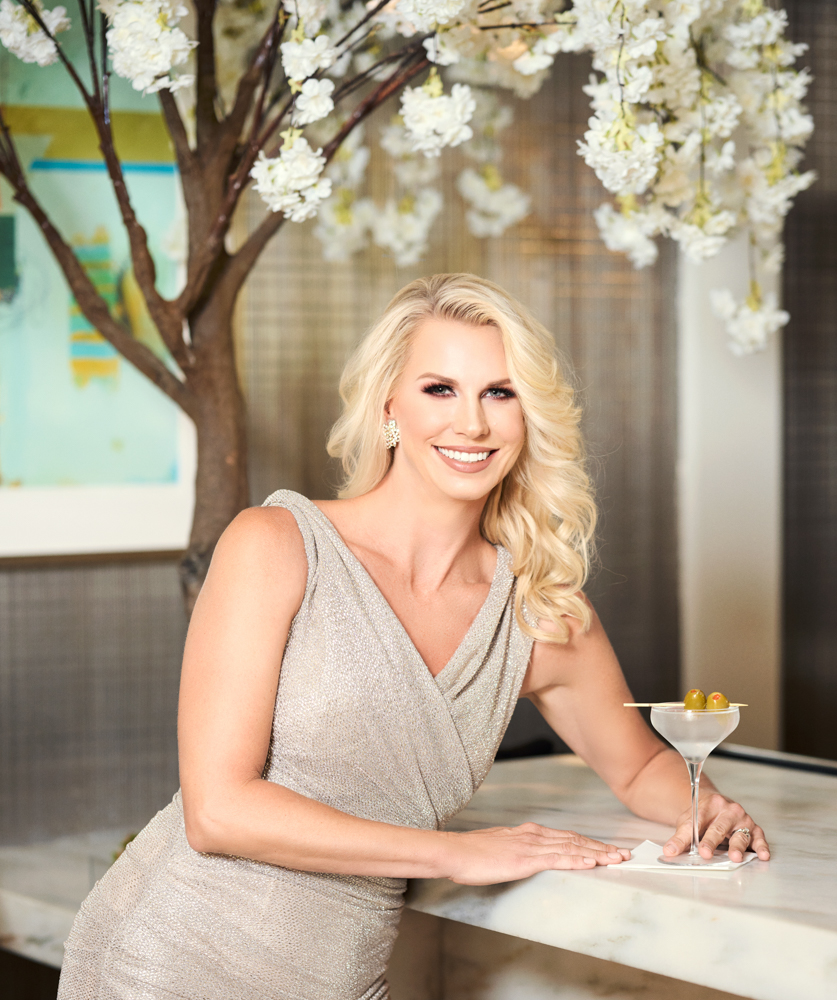
HL: How did you end up practicing in Pacific Heights?
KH: I was born and raised in Toronto and visited the Bay Area as a young teen. My surgeon father interned at the SF Veteran Affairs Hospital during his medical training and considered working at UCSF, but ultimately returned to Canada to practice, so as to not be drafted to fight in the Vietnam War. I feel I’m fulfilling his dream of practicing as a surgeon in San Francisco. Following five years of plastic surgery training in Canada, I moved to San Francisco for a final fellowship year in reconstructive microsurgery. I joined an all-women plastic surgery practice in Pacific Heights which I ultimately took over and have subsequently grown to our current thriving practice.
HL: You fell in love with the Bay Area immediately?
KH: Soon after I moved here in 2005, I knew San Francisco was home. I don’t miss the Canadian winters, but I do return to our lakeside cottage each summer to visit with family and friends. I now live in Marin with my husband Mike and our twins, Sarah and Elizabeth. I get to exercise outside year-round and travel to Tahoe every winter weekend for my twin daughters’ ski team and recreational skiing with family.
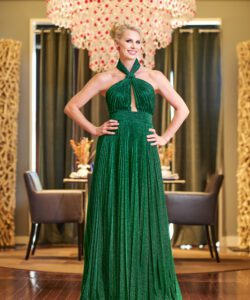 HL: Tell us about your journey to become a surgeon.
HL: Tell us about your journey to become a surgeon.
KH: Growing up, I wanted to become an artist. I also excelled at math and science in school. (I scored 100 percent in high school calculus). I hesitated to automatically follow in my father’s footsteps. However, working in a lab for two years to earn my master’s degree in molecular biology/cancer research was insightful. I much more enjoyed volunteering with young women recovering from eating disorders and bartending to pay the rent than experimenting with mice and test tubes! I was born to interact with people and to help others, or shake them a mean martini.
In medical school, I learned that plastic surgery enabled me to use my hands, my creativity, my brains, and my desire to improve others’ lives every day. Together, my patients and I explore psychological issues such as body image and self-esteem and participate in shared decision-making about what is best for them. Plastic surgery involves restoration of all tissues of the body, spanning birth to old age. It treats congenital birth conditions, injuries resulting from trauma, cancer defects, or the desire for body modification for personal reasons. My profession involves much more than what people typically consider when they think about plastic surgery.
 HL: Your demanding medical training and careers led to starting a family later in life. Tell us about your fertility struggle and how you’ve supported other women in similar situations.
HL: Your demanding medical training and careers led to starting a family later in life. Tell us about your fertility struggle and how you’ve supported other women in similar situations.
KH: I had been married for seven years when my husband was ready to be a dad himself. I would have loved to start our family when my fertility was optimal, but I was intentionally intimidated and pressured by some senior male surgery teachers not to get pregnant, as that would make the training program suffer and put me at risk of losing my residency position (i.e., get fired).
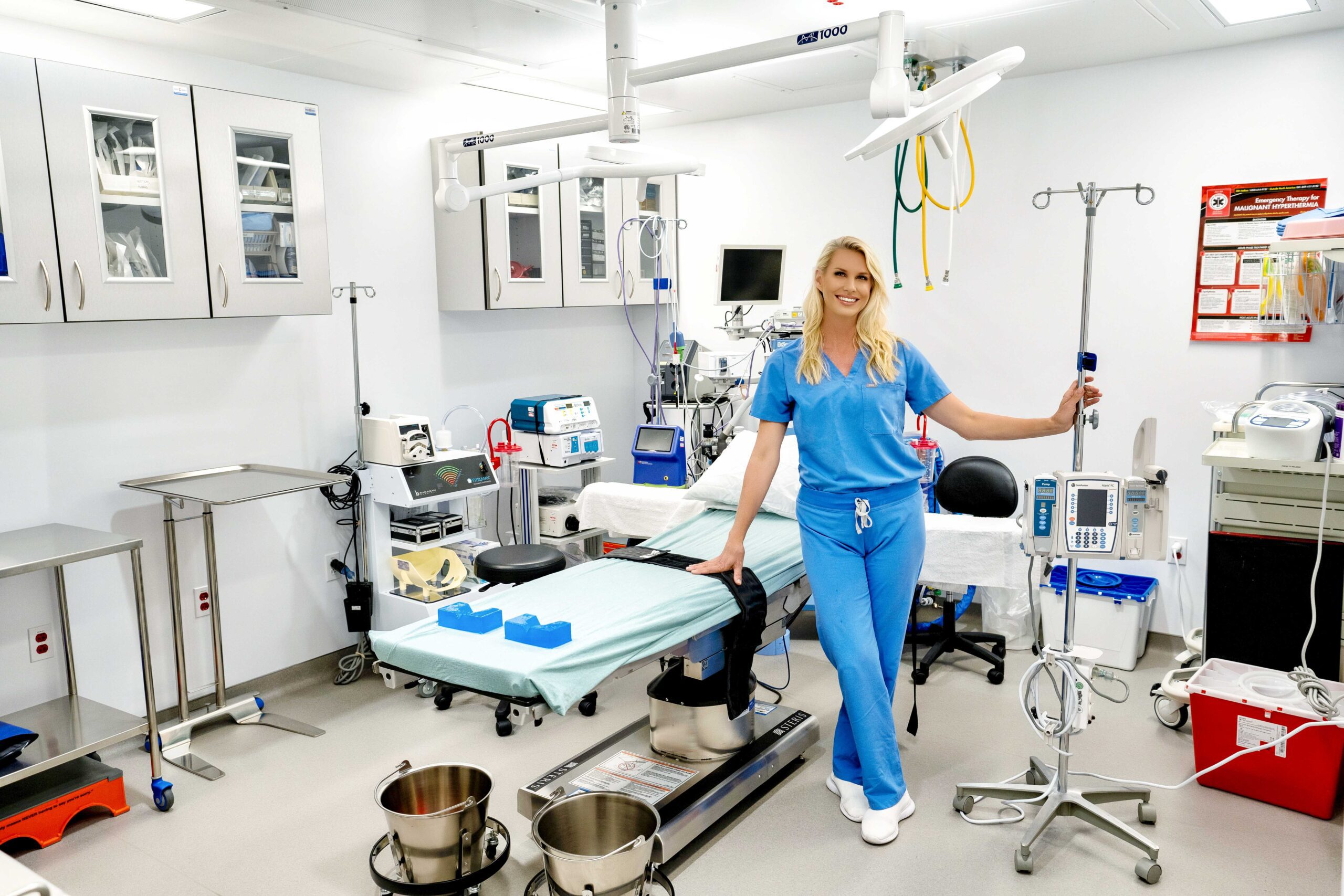 Stunned to hear that, I got involved in graduate student politics and was appalled to learn that there was no maternity or paternity protection for medical residents who became pregnant at my university. It took five years of advocacy, but when I graduated in 2005 from surgical residency, we had secured a 2-week protected leave for any resident, male or female, to be with their newborn and not be at risk of getting fired. Fast forward 17 years. all residents get a full year off for maternity leave, protected from discrimination or losing their training positions.
Stunned to hear that, I got involved in graduate student politics and was appalled to learn that there was no maternity or paternity protection for medical residents who became pregnant at my university. It took five years of advocacy, but when I graduated in 2005 from surgical residency, we had secured a 2-week protected leave for any resident, male or female, to be with their newborn and not be at risk of getting fired. Fast forward 17 years. all residents get a full year off for maternity leave, protected from discrimination or losing their training positions.
I’m proud I helped to pave the way for those women to start their families earlier, rather than find themselves in the spot I was years later: facing infertility at age 39 when I started my private practice and after trying to conceive for several years. I am indeed grateful for modern medicine and in-vitro fertilization. Without IVF, I would not have given birth to the Horton twins! I am now an “older mom” to tweens at 51, but feel I’m as active, energetic, and youthful as other moms in my daughters’ school group.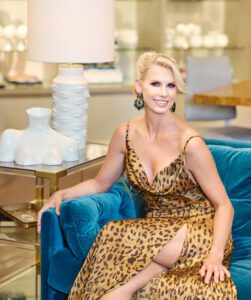
HL: Your husband is a stay-at-home dad. Why was that the best decision for your family?
KH: I married my husband, Mike, when I was 25. We were young, but knew we were soulmates and would be partners in life. Mike has been my number one supporter through many challenges. He gave up his career several times during my medical training and when we moved to a new city for a residency or fellowship.
When the twins turned eight, Mike became a full-time super-dad and took on all parental duties during the week, from pickup and drop-off, driving the girls to soccer and across country to ski team every weekend. My daughters are so fortunate to have a dedicated father who found his calling.
HL: Is having your own practice a dream come true?
KH: Absolutely, I love recruiting and hiring my own personal operating room team. In many ways, we become like family, and our patients can rely on us to work together to achieve their goals. Team members are with the patient from their pre-operative visit to the day of surgery and throughout their post-operative care. This enables continuity of care and a friendly face at all times of their surgical journey. Most importantly, it ensures consistency, reliability, and safety in the operating room.
HL: Tell us about your new office.
KH: Our new Pacific Heights office features the newest and most state-of-the-art outpatient operating room in the entire Bay Area. It took nearly three painful years to plan and build (during a pandemic). We are so proud to have moved into our new space and to be up and running. Our entire suite has tons of natural light, a view of the Golden Gate Bridge tips and Sutro Tower, natural wood, and a modern, clean-but-warm aesthetic. The operating room is the cleanest, safest, and most efficient fully accredited operating room I’ve ever operated in, and it’s exclusive to our patients.
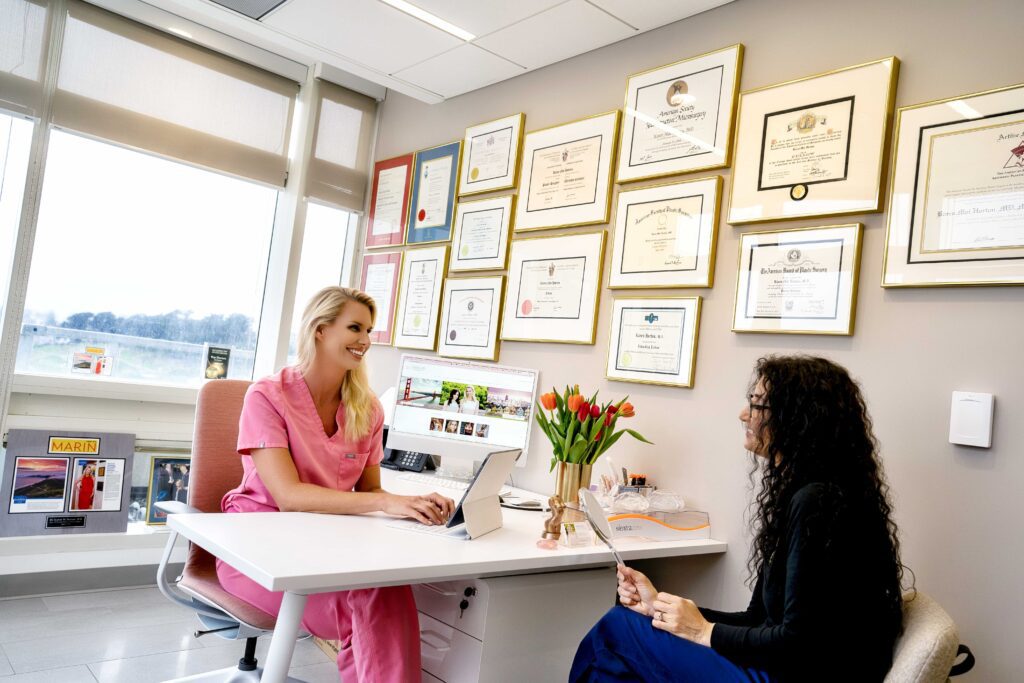 HL: Why are you a leading Bay Area plastic surgeon?
HL: Why are you a leading Bay Area plastic surgeon?
KH: I’ve been in private practice in San Francisco since 2006. I am the same person at work in the O.R. that I am with patients, with my family at home, and with close friends. I don’t take myself too seriously, although I am a perfectionist and put pressure on myself to always do my best in every situation. I genuinely care about every single patient I treat.
I believe the best plastic surgeons have an eye for the aesthetic, meticulous attention to detail, a compassionate demeanor, gentle bedside manner, flexibility during surgery (able to problem-solve intraoperatively in a challenging reconstructive situation), and the ability to put themselves in other’s shoes. If I weren’t a plastic surgeon, I’m not sure what I’d do—perhaps teach children or create art.
HL: What’s a common misconception about plastic surgery?
KH: Plastic surgery doesn’t always involve cutting and sewing. Many aesthetic procedures offered in my office have nothing to do with surgery. We offer the full range of neuromodulators like Botox and Dysport, injectable dermal fillers, laser treatments, and medical-grade skin care. I always say the best plastic surgery is all around us, but you would never know. Results do not need to look “overdone” or obvious to others. We all want to put our best face forward and to look as youthful as we feel inside—and we should.
Plastic surgery also isn’t for everyone. However, it’s not vain to want to look your best at every age. The typical plastic surgery patient isn’t a celebrity or socialite; it’s a normal person who just wants to look as good as they realistically can. In our office, we see women and men from their twenties to their seventies who are looking to rejuvenate their face, breasts, or body.
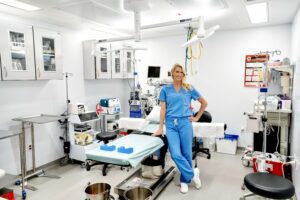 HL: Talk about the gift of beauty. What does that mean to you?
HL: Talk about the gift of beauty. What does that mean to you?
KH: Beauty is a gift we all are born with, and true beauty is a trait that comes from within. However, even the most externally “beautiful” people age. Our faces lose volume, soft tissues sag and deflate, natural collagen stores get depleted, and elastin weakens. Plastic surgery and non-surgical aesthetic treatments can help restore many features that are lost with age and that represent youth, but you should always maintain your own unique aesthetic. It’s ridiculous for a woman or man in their fifties or sixties to try to look 20 again. However, many products and treatments available through a board certified plastic surgeon’s office can help you look your very best, at any age.
HL: What are your five top winter treatment recommendations?
KH: Winter is a popular time to undergo procedures requiring a little more downtime, since patients get less sun and most have more time off to recover around the holidays. Cooler weather facilitates bundling up over postoperative garments after more extensive surgical procedures such as tummy tucks, breast lifts, liposuction, and lower facelifts/neck lifts.
Now is a great time to have laser treatments to address some of the visible signs of sun damage. In the winter, we are busy with IPL (intense pulsed light) and Clear + Brilliant® laser treatments to address sunspots, hyperpigmentation, and other visible signs of sun damage on the face, neck, chest, and hands.
Dermal fillers are also very popular in the countdown to the holidays. It’s common for patients to seek out a “full face tune-up” with dermal filler around this time. Artfully placed filler can help restore volume lost through the aging process and freshen up the face, just in time for holiday parties and visits with friends and family.
HL: What’s your personal favorite treatment to have done in winter?
KH: Wintertime is the best time to tackle inevitable sun damage that accumulates over the preceding sunny seasons. Intense pulsed light (IPL) laser-type treatments help to reduce brown spots and broken blood vessels (telangiectasias), which are common features of sun damage. I get my semi-annual fillers touched up by our aesthetic nurse practitioner, Emily Sespaniak, in the winter, and quarterly Botox treatments to smooth out my forehead lines, frown lines, and crow’s feet, without looking “frozen” or devoid of facial expression.
Follow Dr. Horton on Instagram @DRKARENHORTON
Contact her at drkarenhorton.com or 415-923-3067
Photographer Vincent Gotti, Executive Producer Teresa Rodriguez, Hair and Makeup Ozzie Mendoza, Wardrobes and styling provided By Neiman Marcus
